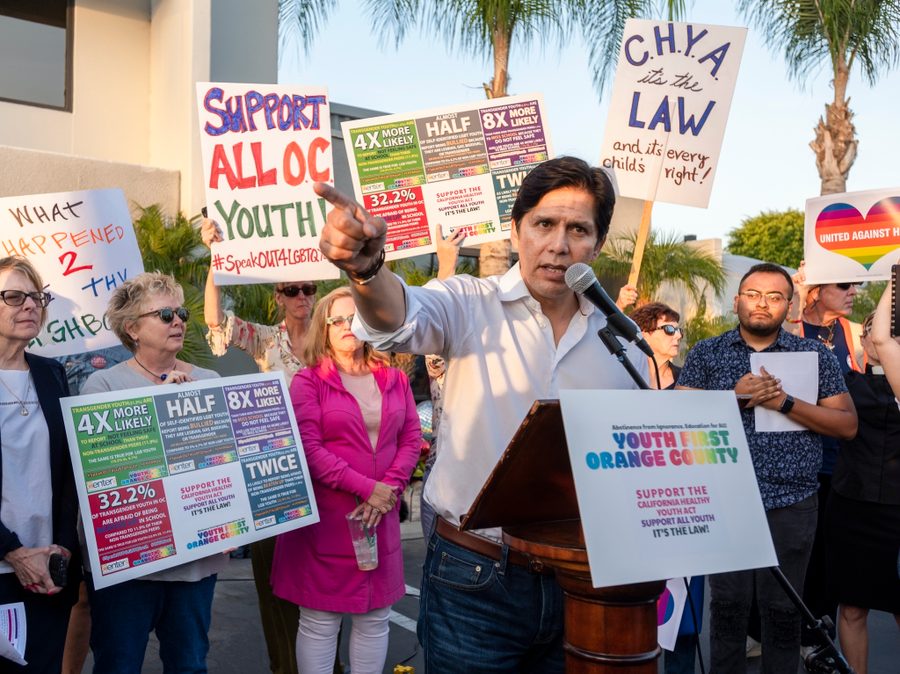12 Reasons Why Sex Ed Reform Cannot Wait
Less than half of U.S. schools offer sex education that is medically accurate.
Ria Bhagwat

Within a month of its launch on Netflix in January 2019, the British TV show Sex Education picked up traction across the world, hitting a whopping 40 million views. The show explores the life of Otis Milburn, a high schooler whose mother is a sex therapist. Through a series of accidental events, Milburn, too, becomes a quasi-sex therapist for students at his school, offering advice on basic things they ideally should have learned in their high school sex-ed courses.
While Sex Education is a fictional narrative based outside the United States, the teen comedy-drama tackles an important issue facing U.S. schools today: Young adults are woefully undereducated when it comes to sex. Even though 40% of people have had sex by the time they graduate high school, only 30 states and the District of Columbia require public schools to teach sex education, and only 22 states require that this education be medically and factually accurate. According to the Centers for Disease Control and Prevention (CDC), high quality sex ed should provide students with access to resources, services and strategies to make sex-related decisions for themselves, including information on HIV, STI and pregnancy prevention. Yet only 43% of U.S. high schools and 18% of middle schools follow these CDC guidelines.
U.S. sex education in the country also has lacked LGBTQ+-inclusive information on sexual health, ignoring the needs of queer and trans students. In an article published by Rewire News, author Cassandra Corrado argues for a radical sex-ed curriculum that emphasizes fluidity in gender and sexuality and teaches sex as a consensual, empowering act of pleasure and care that takes on different forms for different people. “When you try to teach sex ed as if sex happens in a vacuum … you’re doing a disservice to your students,” Corrado writes.
In recent years, some progress has been made toward better, more inclusive sex ed. Last year, Alabama introduced a bill that would update sex-ed requirements by removing a provision that required schools to teach that homosexuality “is not a lifestyle acceptable to the general public and that homosexual conduct is a criminal offense under the laws of the state.” In 2015, California passed the Healthy Youth Act, which requires sex education to be LGBTQ+ inclusive. Iowa, Colorado and Washington also have enacted similar laws.
Outside of legislation, nonprofits like Sex Ed for Social Change and Advocates for Youth have been fighting for decades for factual sexual health information and access to confidential and affordable sexual health services through a series of programs, campaigns and policy advocacy, recognizing health disparities based on class, sexuality, gender, age and race. In Massachusetts, Alabama and Arizona, policies have been reviewed and changed to modernize their sex-ed curriculum by focusing on consent and healthy relationships, as well as removing any restrictions on discussions of LGBTQ+ identities, issues and relationships in detail.
Unfortunately, even as states take steps toward a more comprehensive, accurate sex-ed curriculum, there is pushback. In 1993, a campaign titled Choosing the Best launched in order to emphasize abstinence as a preventative measure for teenage pregnancy. On the contrary, the CDC reports that comprehensive sex-ed can improve academic performance and increase the use of protection (condoms, birth control, etc.) between sexual partners.
More recently, a movement called Stop CSE (comprehensive sexuality education), which lobbies to stop all-inclusive sex education, has sprung up in Gilbert, Ariz., through a joint effort by Family Watch International, the UN Family Rights Caucus, and the Stop the Kinsey Institute coalition. When California’s Informed and In Charge program launched in 2019, protesters from Stop CSE stood outside state legislator’s offices, stating that the program existed to propagandize children and claiming that it negatively impacts their innocence and health at a young age. A 2014 study by the Guttmacher Institute, however, shows that teenage pregnancy rates have dropped significantly due to comprehensive sex-ed classes. Additionally, by fostering a safe and sympathetic school environment, students are less likely to contract sexually transmitted infections or experience suicidal ideation/emotional distress and violent romantic relationships.
These 12 statistics on sex education show how far we have yet to go to ensure our youth are adequately informed about sexual health:
93% of U.S. adults have had sexual intercourse by age 25.
28 states do not mandate medically accurate sex ed in schools.
20 states do not mandate sex ed at all.
$2,000,000,000 in federal funding over the past two decades went toward abstinence-only education for adolescents, despite evidence that it does not reduce pregnancy rates or STI transmissions, according to a 2017 Guttmacher Institute report.
4,000,000 U.S. students have completed the “abstinence-centered” Choosing the Best program, which says the failure rate of condoms is 13% for a “typical user.”
2% is the actual failure rate of condoms if used correctly, according to World Health Organization.
43% of U.S. teen girls had not received information on birth control prior to their first sexual encounter, from 2011-2013.
57% of U.S. teen boys reported the same.
8% of teens identified as gay, bisexual or lesbian in 2016.
1.8% of teens identified as transgender in 2017.
8.2% of students reported learning about LGBTQ+ topics in health class in 2019.
51% of students reported being unable to access LGBTQ+ info from school libraries in 2019.





